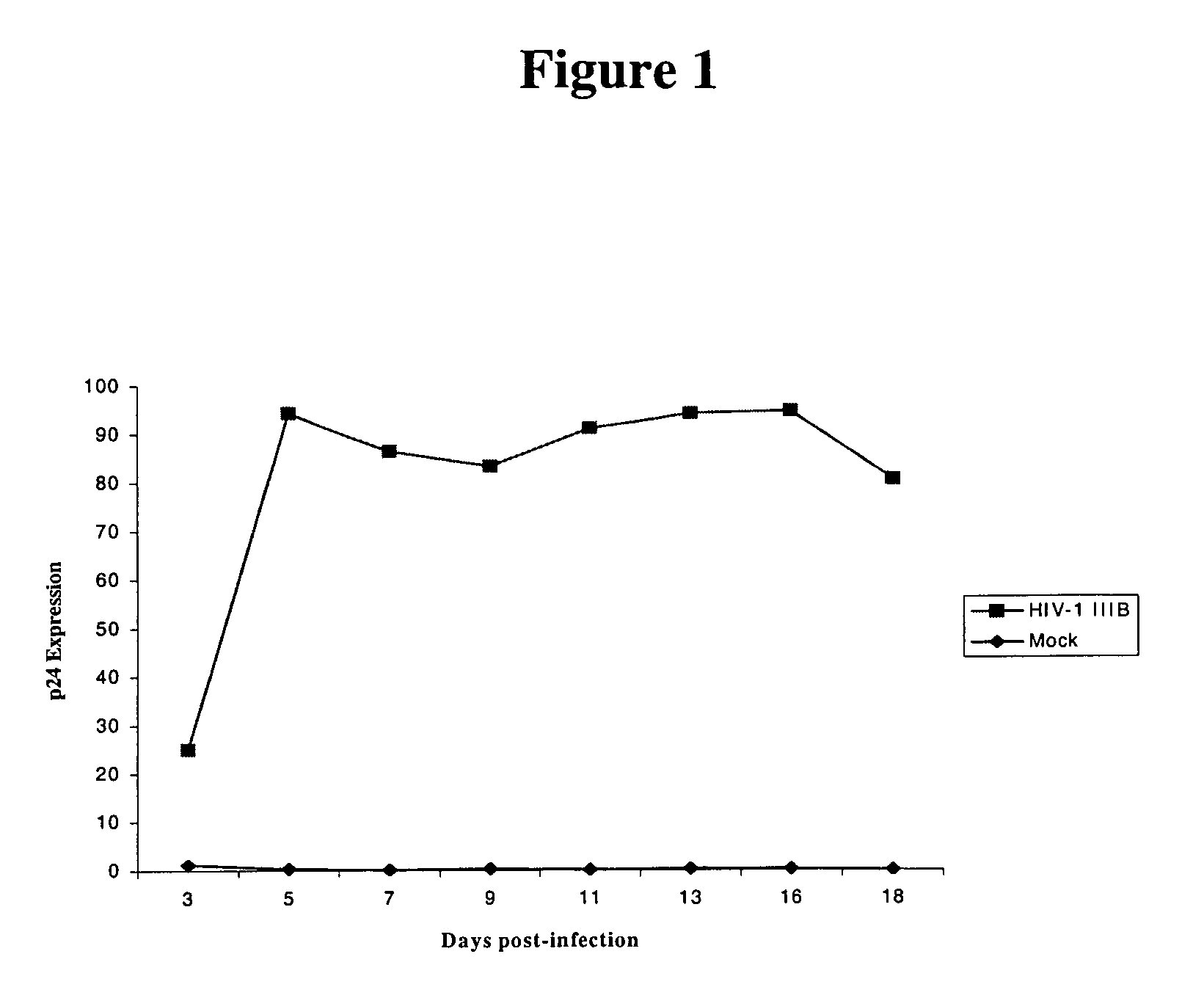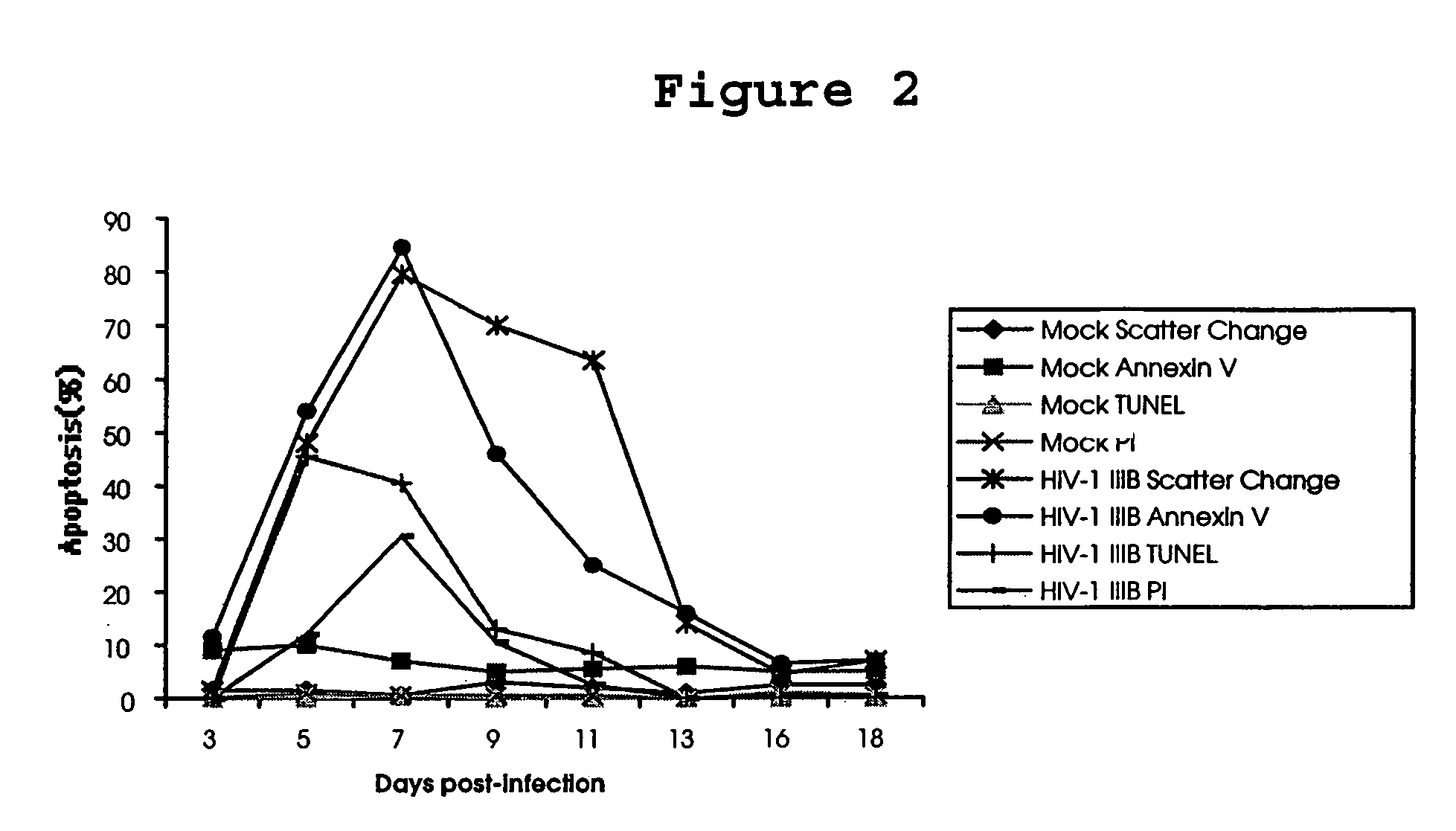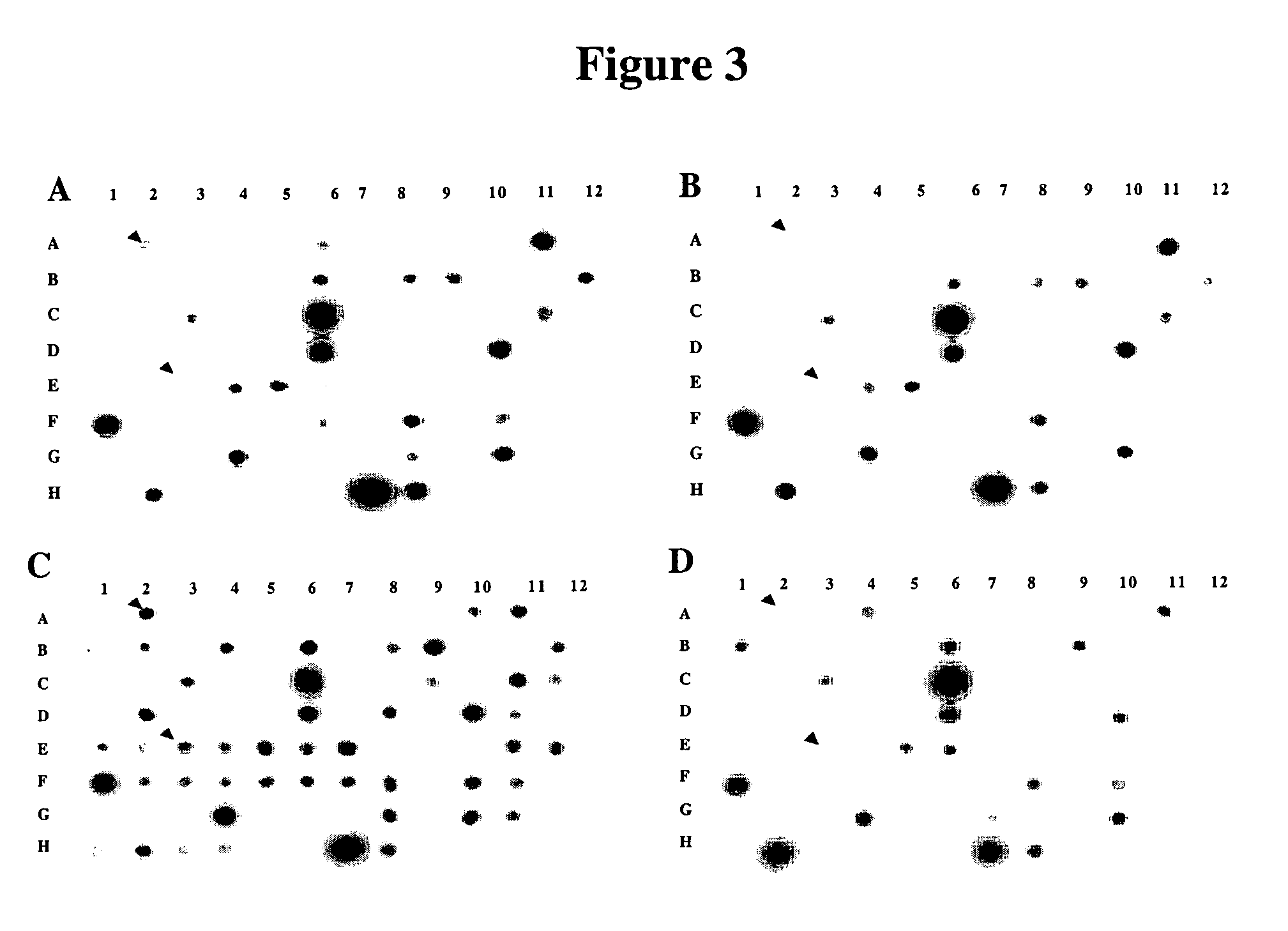Cellular genes regulated by HIV-1 infection and methods of use thereof
a technology of hiv-1 infection and cell genes, applied in the field of new cellular genes, can solve the problems of apoptosis, aids and ultimately death, no cure nor proven treatment or vaccine for the treatment of hiv/aids, and the mechanism of apoptosis in hiv-1 infection remains obscure and controversial, and achieves the effect of reducing the number of cells infected
- Summary
- Abstract
- Description
- Claims
- Application Information
AI Technical Summary
Benefits of technology
Problems solved by technology
Method used
Image
Examples
example i
Identification of HALP
[0153]In order to further elucidate the molecular mechanisms of HIV pathogenesis, PCR-select cDNA subtraction and differential screening were performed on T cells infected with HIV-1 IIIB isolates to identify cellular gene products involved in the regulation of apoptosis of HIV-1 infected cells. One such gene product, designated HALP, was identified as described below.
[0154]The following methods and protocols are provided to enable practice of the methods of Example I.
Cell Culture
[0155]The CD4+ T cell line CEM-SS was obtained from the repository of the NIH AIDS Research and Reference Reagent Program (from Dr. Peter L. Nara) and was maintained in RPMI 1640 medium (Gibco-BRL, Gaithersburg, Md.) supplemented with 10% fetal calf serum (FCS), 2 mM L-glutamine, 100 U / ml penicillin and 100 μg / ml streptomycin. The Hela-CD4-LTR-β-gal cell line was also obtained from the repository of the NIH AIDS Research and Reference Reagent Program (from Dr. Michael Emerman) and was ...
example ii
Anti-Apoptotic HIV-1 Infected Cell Lines
[0176]Genes which are preferentially expressed on day 18, relative to day 7, post-infection with HIV-1 IIIB are candidate anti-apoptotic genes whose expression provides infected T cells with protection from apoptosis. Such genes may also play a role in the promotion of HIV transcription and / or replication. To confirm that genes identified by the methods of the present invention (e.g., HALP, CD4, DF2, DF4, CC8, and DG1) modulate HIV-1-induced apoptosis, HIV-1 infected cells and normal CEM-SS cells may be transduced with retroviral vectors expressing an identified gene product to establish stable cell lines that produce replication incompetent virus. Such cell lines provide useful reagents with which to monitor apoptosis of HIV-1 infected cells by methods described hereinabove and known to those skilled in the art. In one aspect, these transduction experiments may reveal the role of identified gene products in modulating apoptosis of HIV-1 infec...
example iii
HALP Expression Modulates HIV-Induced Apoptosis
[0179]To confirm HALP expression modulates HIV-induced apoptosis, HALP was expressed in cells prior to HIV infection and apoptosis was monitored by morphological changes readily detected by flow cytometry. Specifically, CEM-SS cells, described hereinabove, were transfected with the ecdysone-inducible vector pVgRXR (Invitrogen, Carlsbad, Calif.), which encodes the ecdysone receptor subunits, using the FuGEN™ 6 transfection reagent (Roche, Indianapolis, Ind.) per the manufacturer's direction. Stably transfected cells were selected by growing the transfected CEM-SS cells in the presence of 300 μg / ml Zeocin™ (Invitrogen, Carlsbad, Calif.) beginning at 48 hours after transfection. The selection medium was subsequently changed every three days. The stably transfected cell line was named CEM-EcR.
[0180]pIND-GFP and pIND-GFP-HALP are derivatives of the pIND (Hygro) vector (Invitrogen, Carlsbad, Calif.). The PIND (Hygro) vector is an inducible ex...
PUM
| Property | Measurement | Unit |
|---|---|---|
| Tm | aaaaa | aaaaa |
| temperature | aaaaa | aaaaa |
| Tm | aaaaa | aaaaa |
Abstract
Description
Claims
Application Information
 Login to View More
Login to View More - R&D
- Intellectual Property
- Life Sciences
- Materials
- Tech Scout
- Unparalleled Data Quality
- Higher Quality Content
- 60% Fewer Hallucinations
Browse by: Latest US Patents, China's latest patents, Technical Efficacy Thesaurus, Application Domain, Technology Topic, Popular Technical Reports.
© 2025 PatSnap. All rights reserved.Legal|Privacy policy|Modern Slavery Act Transparency Statement|Sitemap|About US| Contact US: help@patsnap.com



